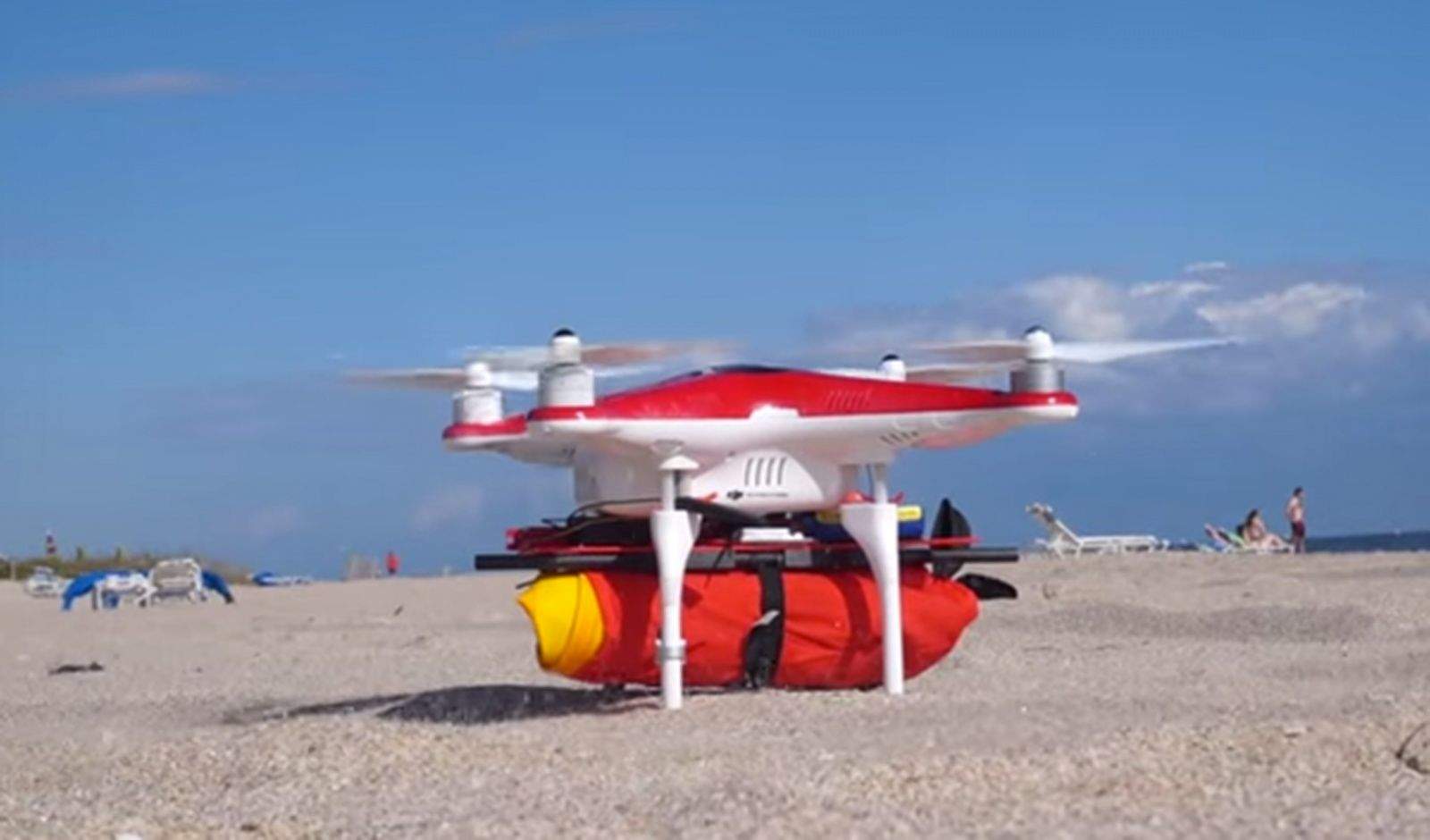The buff and beautiful lifeguard runs in slow motion down the beach, unseen winds blowing their hair in a Hollywood-made rescue fantasy. But hey, you’re drowning, there’s no time for that.
Your savior could be a group of Connecticut high school students who have developed a drone accessory that deploys an automatically inflating life ring to a swimmer in distress in under 30 seconds.
Software developer Bill Piedra and five computer science students from the King Low Heywood Thomas School in Stamford have developed a cradle-and-release device that fits on any drone capable of carrying a GoPro camera and gimbal.
Drones come in all shapes and sizes, capable of delivering bunker-busting missiles as well as new angles in photography and filmmaking. Amazon is developing a drone delivery system that will bring packages to your door and more pilots are complaining about close encounters with the growing flock of drones in the sky.
The developers of the Ryptide hope to fill a niche and give the well-trained lifeguard another tool.
The device will sell for $99 and money raised on an upcoming Kickstarter campaign will be used to develop more advanced models, including one that transports and drops up to four life rings.
Major aquatic safety organizations in the United States claim lifeguards rescue more than 100,000 people from drowning annually. They also report about 100 total drownings in waters off lifeguard-patrolled beaches.
Whether Ryptide, paired with a rescue swimmer, can reduce the number of drownings is unknown. But a recent demonstration in front of some lifeguards, Piedra said, created a buzz beyond the whirl of the drone’s propellers and a YouTube video showing a simulated rescue posted just before Christmas garnered more than 19,000 views.
“Most of the drones you see at the beach carry cameras but this could be a great tool to help somebody,” Piedra told Cult of Mac. “Most accidents occur within 500 yards of the shore and the key to a rescue is to make sure the person can keep their head above water. But there is also a safety concern for the lifeguard. A person in distress in the water will try to grab onto whatever they can.”
Piedra founded and ran a soft are company for about 16 years, sold it in 2001 and has been an independent software developer since. His hobby is radio controlled aircraft and his students were excited about the idea of designing and manufacturing a useful device for a drone. Piedra floated the idea of equipping a DJI Phantom drone with some sort of life preserver and the students – Seniors Nick Smith, Connor Murphy, Peter Doering, James Lewis and Joseph Widder – began brimming with ideas on how to produce designs with a 3D printer.
The development team began working in September and came up with five different designs before settling on one where the claw carrying the life ring, triggered from an RC transmitter, worked perfectly every time, Piedra said. The device had to weigh no more than a GoPro camera. The finished product weighs less than 420 grams and attaches within seconds without tools. A servo pulls a pin holding a Velcro strap which holds the life ring snugly in place.
The students are employed by Piedra’s company, Flying Robots LLC, and will be responsible for manufacturing and filling orders. The students get paid and will eventually have stock in the company.
Piedra has partnered with bright high school students in the past. In 2008, he worked with three students from another school and developed tooble, an app that allows iPod and iPhone users to easily download YouTube videos. The team raised more than $300,000 from private investors and one of the students, Jesse Youngblood, received a full-ride scholarship to Carnegie Mellon University for his work with tooble.
Future designs for Ryptide will be more advanced and will include a thermal imaging sensor that can spot a distressed swimmer and more precisely target the life ring drop.
“The swimmer automatically stands out in water more easily, like a bright red beacon” Piedra said.


